As an Assistant Task Manager within UNEP’s GEF Chemicals and Waste Unit, Inaki Rodríguez is working to end the harm caused by toxic chemicals and waste.
In an interview, we sat down with him to discuss his work and how he came to work on artisanal and small-scale gold mining.
What do you do in the Chemicals team?
I’m a Task Manager, which means I’m responsible for the design and management of projects. I work across a portfolio which supports the Minamata Convention on Mercury, a crucial multilateral environmental agreement designed to protect human health and the environment. In doing so, I concentrate on reducing and or eliminating the use of mercury from countries’ artisanal and small-scale gold mining (ASGM) sectors, primarily through planetGOLD, a programme designed to make small-scale gold mining safer, cleaner and more profitable.
How did you get into this line of work?
I first became interested in ASGM while working at the Embassy of Spain in Kenya. I was tasked to analyze the state of mining in East Africa, and on delving into the environmental consequences of mineral extraction I was completely captivated by the profound impact the industry had, not only on miners but on the broader environment. From there, I moved to the United Nations Industrial Development Organization to work on ASGM projects in Columbia, Mongolia and the Philippines, amongst others, and support countries to understand the extent of mercury pollution emerging from their respective sectors.
What has surprised you most whilst working on pollution?
Most surprising is the subtle and often masked nature of mercury pollution, unlike the more overt and immediate effects of climate change or biodiversity loss. I’ve been to pristine tropical forests, far from mining sites, which are completely devastated by mercury contamination. Yet, it’s invisible to the human eye. Effectively communicating this issue to the general public presents a unique set of challenges, made difficult by underreporting.

What are some of the most pressing challenges to address?
The transition to renewable energy, via electric vehicle batteries and solar panels, is a phenomenon that will increase the demand for gold on a global scale. Ensuring this doesn’t lead to an upsurge in uncontrolled mining operations, heavily reliant on hazardous chemicals, is a key challenge, for we cannot afford a transition which further damages the environment and poses a threat to our health.
What issue doesn’t receive enough attention?
One issue that isn’t discussed enough is the impact of chemical pollution on biodiversity hotspots, such as the Congo Basin. Interventions to tackle both problems simultaneously exist; however, returning to my point above, we must be careful not to burden shift when considering solutions. Extracting resources to further the energy transition, for instance, may result in the destruction of fauna and flora. This requires a systems mindset that, while challenging, is necessary to tackle interconnected crises.
What are you most excited to work on looking ahead?
While the Minamata Convention is relatively young, signed only a decade ago, it is a vital environmental treaty which is receiving more and more attention, not only from public but private sector actors. I’m very excited to see how this will unfold, as collaborative efforts involving key actors along the gold supply chain could drive substantial improvements in responsible gold production. The planetGOLD programme, for instance, is helping organizations like the Swiss Better Gold Initiative, London Bullion Market Association and World Gold Council move away from a “no questions asked” approach when sourcing their gold, improving mining operations on the ground.
NOTES TO EDITORS
About the Global Environment Facility
The Global Environment Facility (GEF) is a multilateral fund dedicated to confronting biodiversity loss, climate change, pollution, and strains on land and ocean health. Its grants, blended financing, and policy support helps developing countries address their biggest environmental priorities and adhere to international environmental conventions. Over the past three decades, the GEF has provided more than $22 billion in financing and mobilized another $120 billion for more than 5,000 national and regional projects.
For more information, please contact:
Inaki Rodríguez, Task Manager, Chemicals and Waste Portfolio, UNEP




